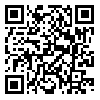Articles accepted at the time of publication
Back to the articles list |
Back to browse issues page
1- Department of Foreign Languages, Isfahan (Khorasgan Branch), Islamic Azad University, Isfahan, Iran.
2- Department of Foreign Languages, Isfahan (Khorasgan Branch), Islamic Azad University, Isfahan, Iran. ,Fatinaz.karimi@yahoo.com
3- Department of English Language, College of Education for Humanities, University of Kerbala, Kerbala, Iraq.
4- Associate Professor, Department of EnglishFaculty of Letters and HumanitiesFerdowsi University of Mashhad, Iran
2- Department of Foreign Languages, Isfahan (Khorasgan Branch), Islamic Azad University, Isfahan, Iran. ,
3- Department of English Language, College of Education for Humanities, University of Kerbala, Kerbala, Iraq.
4- Associate Professor, Department of EnglishFaculty of Letters and HumanitiesFerdowsi University of Mashhad, Iran
Abstract: (51 Views)
This study aimed to explore the impact of pragmatics instruction on the perception and production of expressive and directive speech acts by Iraqi EFL learners. The study also sought to investigate the attitudes of both learners and teachers towards the use of task-based pragmatics instruction in both conventional face-to-face and technology-based classrooms. To achieve this goal, 120 Iraqi EFL learners took part in the study, divided into two experimental groups (conventional and technology-based classrooms) and one control group without pragmatics instruction. Data were analyzed quantitatively and qualitatively using statistical quantitative approaches for the former and content analysis for the latter. The results revealed that students who received instruction in speech acts, whether in conventional or online classrooms, performed better than those who did not receive any instruction in this area. Additionally, the findings supported the idea that online students outperformed their counterparts in conventional classrooms. Furthermore, the study found no significant gender differences in the speech act performance of Iraqi EFL learners. In the end, the benefits and challenges of task-based pragmatics instruction in online and conventional classrooms were discussed and implications were provided.
Article Type: مقالات علمی پژوهشی |
Subject:
English language
Send email to the article author
| Rights and permissions | |
 |
This work is licensed under a Creative Commons Attribution-NonCommercial 4.0 International License. |






